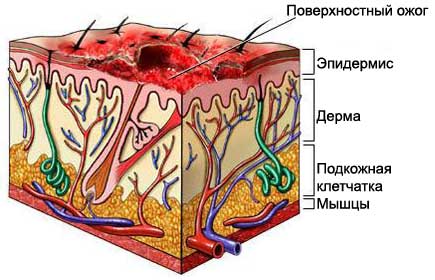Blood poisoning – Sepsis – Septicemia
Description of sepsis
Sepsis – disease, arising due to exposure to infections or toxins, spreading through the bloodstream. Presence of bacteria in the blood is called bacteremia.
A short appearance a small amount of bacteria in the blood is normally not problematic. If bacteria continue to multiply, they may cause sepsis. It is a serious disease, which can lead to death.
Causes sepsis
Sepsis arises, when blood appears a large number of infectious agents. Also, can lead to sepsis infection, fungi and parasites. The main reasons for the initial infection of the blood:

Bacteria can also get into the blood stream directly from an external source. Dirty needles, which are used for the administration of drugs and injecting drug use, can cause this type of infection. In some cases, the source of infection remains unknown.
Small amounts of bacteria enter the bloodstream during dental procedures. The immune system usually copes with these bacteria.
Risk factors for sepsis
Factors, which increase the likelihood of sepsis:
- Illness or inpatient treatment;
- Poor health, due to age;
- Weak immune system, at the expense of:
- Cancer or chemotherapy for treating cancer;
- Diabetes;
- AIDS or other immunosuppressive disorders, such as autoimmune diseases or immune deficiency;
- Receiving immunosuppressive, needed after a transplant;
- The introduction of drugs through invasive device;
- Injecting drug abuse.
Sepsis – symptoms
Initial symptoms depend on the site of infection in the body.
When the condition progresses to sepsis, symptoms include:
- Fever and chills;
- Low temperature;
- Pale skin color;
- Slackness;
- Changes in mental state;
- Rapid breathing;
- Increased heart rate;
- Reduced diuresis;
- Low blood pressure;
- Shock;
- Problems with blood flow or blood clotting.
Diagnosis of sepsis
The doctor will ask about your symptoms and medical history, and perform a physical examination. If sepsis is suspected, the doctor will try to find the source of infection.
Assays include:
- Sowing blood cultures to confirm the diagnosis of sepsis;
- Urine and other blood tests, to check for signs of infection;
- Culture of urine, Sputum, feces and other secretions, to check for bacteria or other infectious agents;
- Roentgen – analysis, which uses X-rays, to make pictures of structures inside the body;
- CT – such as X-rays, which uses computer, to make pictures of structures inside the body;
- MRT – examination, which uses magnetic waves, to make pictures of structures inside the body;
- Other specialized tests depending on the source of infection.
Treatment of sepsis
Sepsis requires prompt initiation of treatment. Treatment is aimed at addressing the causes of infection.
Early treatment improves the chances of survival. It may be necessary urgent measures to assist with breathing and maintaining heart function. Patients, as a rule must be kept in the intensive care.
Admission lekrstv in sepsis
To fight primary infection and its removal from the circulation are used antibiotics. Also, antibiotics will be appointed after discharge from the hospital.
Operation in sepsis
Sometimes surgery is needed, to remove or drain the initial infection region.
Supportive therapy in the treatment of sepsis
Probably, You should be assigned additional drugs, IVs and oxygen therapy. In some cases it may be necessary blood transfusion and the use of the respirator. Further treatment depends on the condition of the body. For Example, may require dialysis, if there is renal failure.
Prevention of sepsis
Infection of the blood is not always possible to prevent. Avoiding drug abuse reduces the likelihood of sepsis.
Health care providers should take measures, to stop the spread of infections. Getting prompt medical care for infected may reduce the risk of sepsis.
